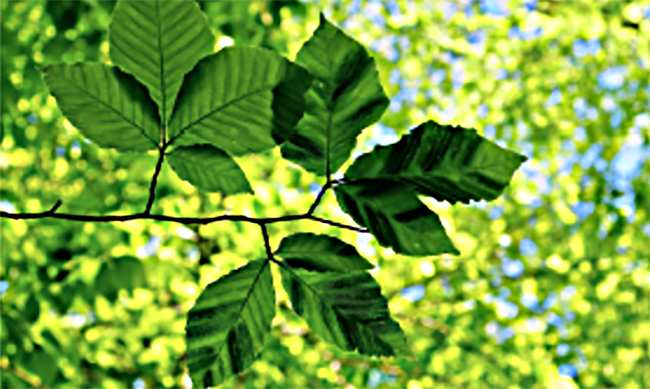- Author: Kathy Keatley Garvey

The seminar is set for 4:10 p.m., Wednesday, May 17 and will only be virtual, announced host Shahid Siddique, nematologist. The Zoom link:
https://ucdavis.zoom.us/j/95882849672.
"The beech leaf disease nematode, Litylenchus crenatae mccannii, is recognized as a newly emergent nematode species that causes beech leaf disease (BLD) in beech trees (Fagus spp.) in North America," Vieira says in his abstract. "Since the first report of BLD on Fagus grandifolia in Ohio in 2012, the disease has rapidly spread to other states and Canada. This nematode has been so far reported in Pennsylvania, New York, Connecticut, Massachusetts, Maine, Michigan, Rhode Island, New Jersey, West Virginia, and Virginia, as well as Ontario. Leaf symptoms include swelling and darkening of interveinal tissues as well as chlorosis, while tissue necrosis and leaf curling occur at later stages of the disease. As a result, mortality of nematode infected understory beech trees has been reported after several years of infection in the United States. The fast dissemination of this nematode can impose a dramatic effect on beech forest ecosystems and natural diversity in North America."
Vieira says that "Little information on the molecular and cellular interaction between this nematode and its hosts is available. To advance our understanding into this unknown host- nematode system, we investigated the cytological aspects of this interaction using bright-field and scanning electron microscopy. Our data reveal that these nematodes can induce morphological changes in both bud and leaf tissues, which so far seem unique in the Nematoda phylum. These cellular changes ultimately provide the necessary nutrients for completion of the nematode life cycle, while dramatically affecting bud and leaf morphology. In addition, we used Illumina mRNA sequence analysis of a mixed stage population to obtain insight into the transcriptome of this nematode. Gene comparative analyses were combined to select a list of candidate effector/parasitism genes. Spatial expression of transcripts within the esophageal glands of L. crenatae mccannii by in situ hybridization validated a list of pioneer effectors novel to this species and across the Nematoda phylum. These analyses provide additional data for understanding the mode of parasitism of this newly emergent plant-parasitic nematode."
Vieira, who joined USDA-ARS in November 2021, holds a master's degree (2007) in plant pathology, phytopathoogy from the University of Évora, Portugal, and a doctorate (2012 in plant pathology, plant-nematode interaction from the University of Nice Sophia-Antipolis and Institute Sophia Agrobiotech, France. His resume includes postdoctoral researcher at the University of Évora (2012-2013) and USDA (2013-2015). Vieira served as a researcher in molecular biology at Virginia Tech for eight years before joining USDA-ARS in Beltsville.
Vieira's current research interests:
- Identification and functional analyses of effectors of plant-parasitic nematodes
- Genomics and transcriptomics of plant-parasitic nematodes, with a particular focus on migratory nematodes
- Plant-nematode interaction studies using cell and molecular biology approaches
Department seminar coordinator is urban landscape entomologist Emily Meineke, assistant professor. For technical issues regarding Zoom connections, she may be reached at ekmeineke@ucdavis.edu. (See complete list of spring seminars.)
Related Resources:
First report of the beech leaf disease nematode Litylenchus crenatae mccannii (Nematoda: Anguinidae) in Michigan (Plant Disease journal, Nov. 22, 2022)
Paulo Vieira: Google scholar, Twitter accounts



